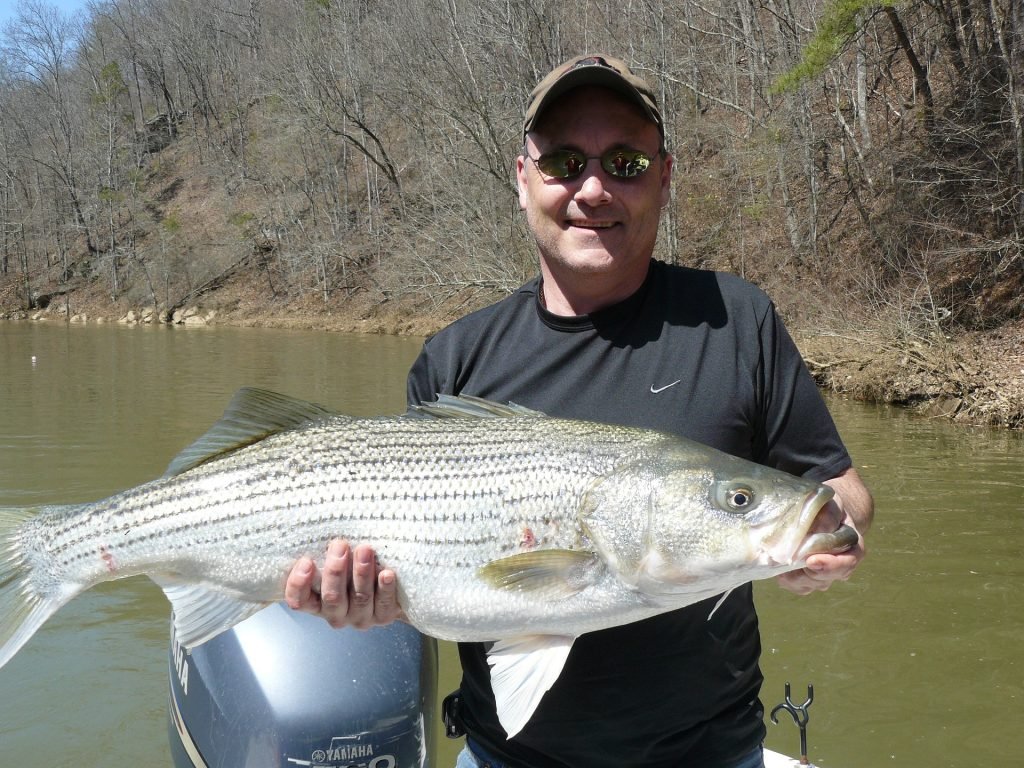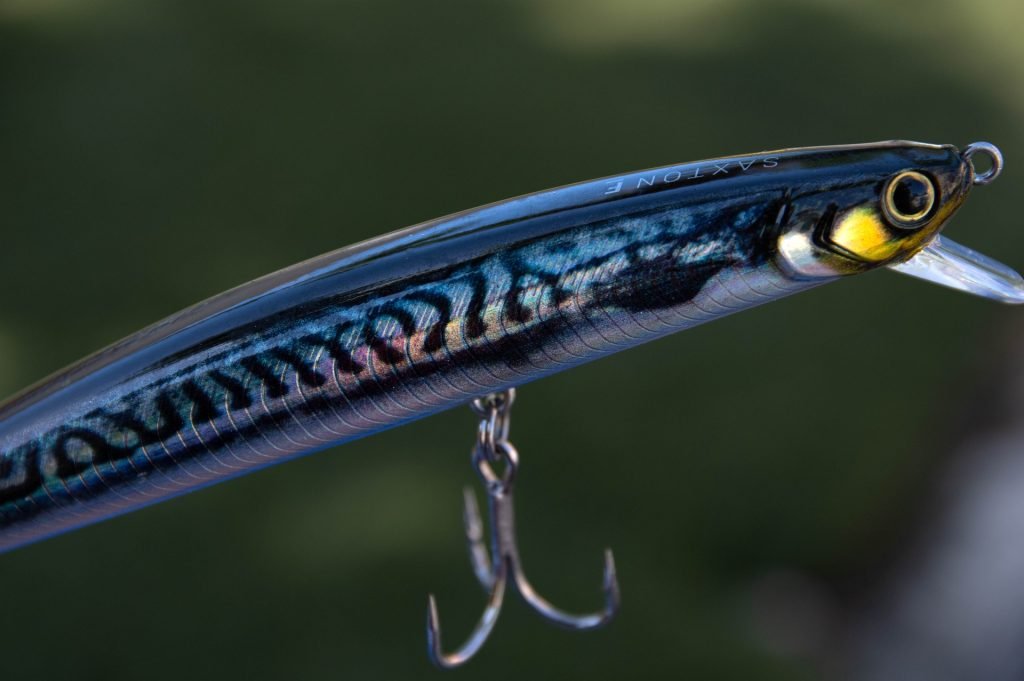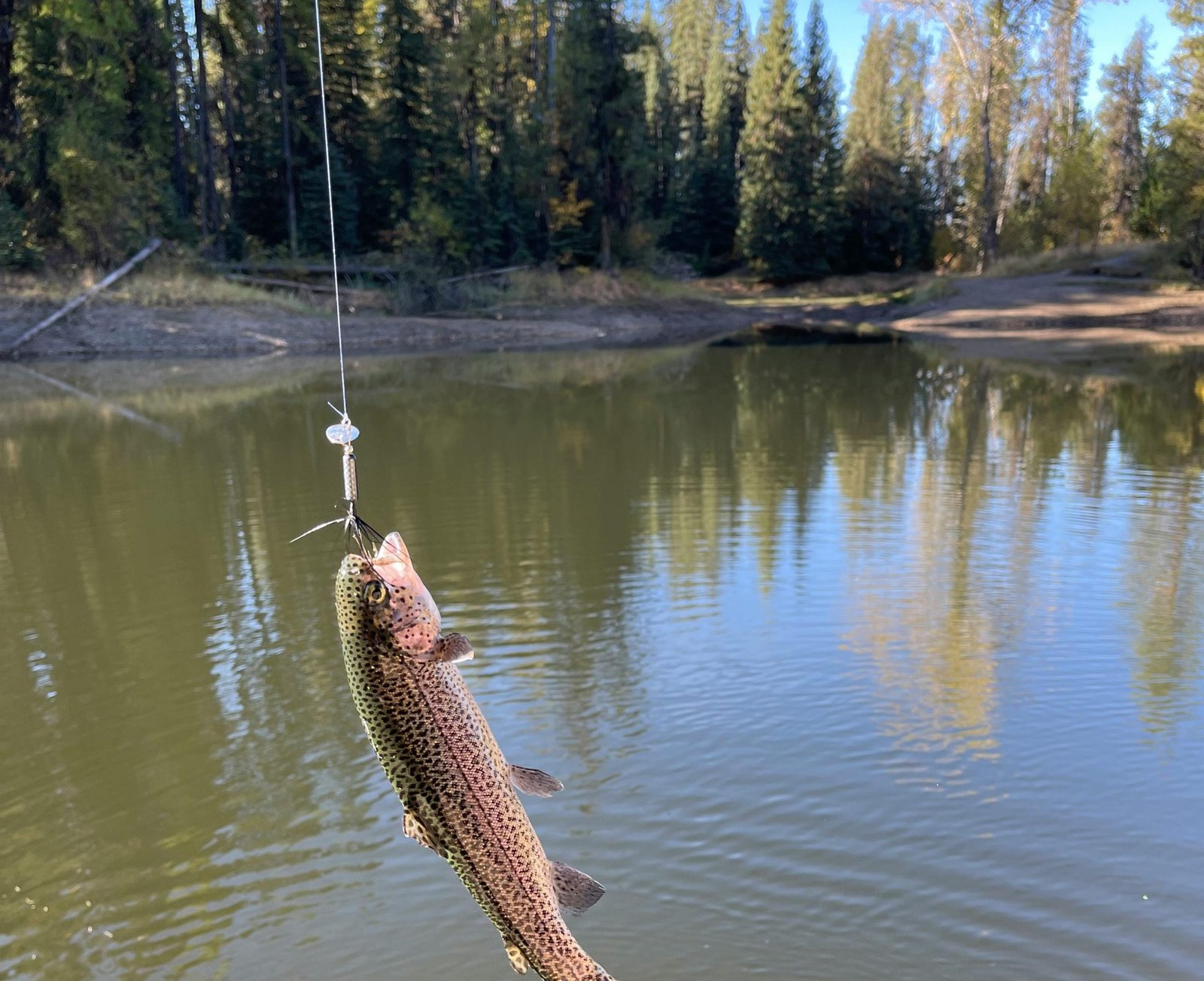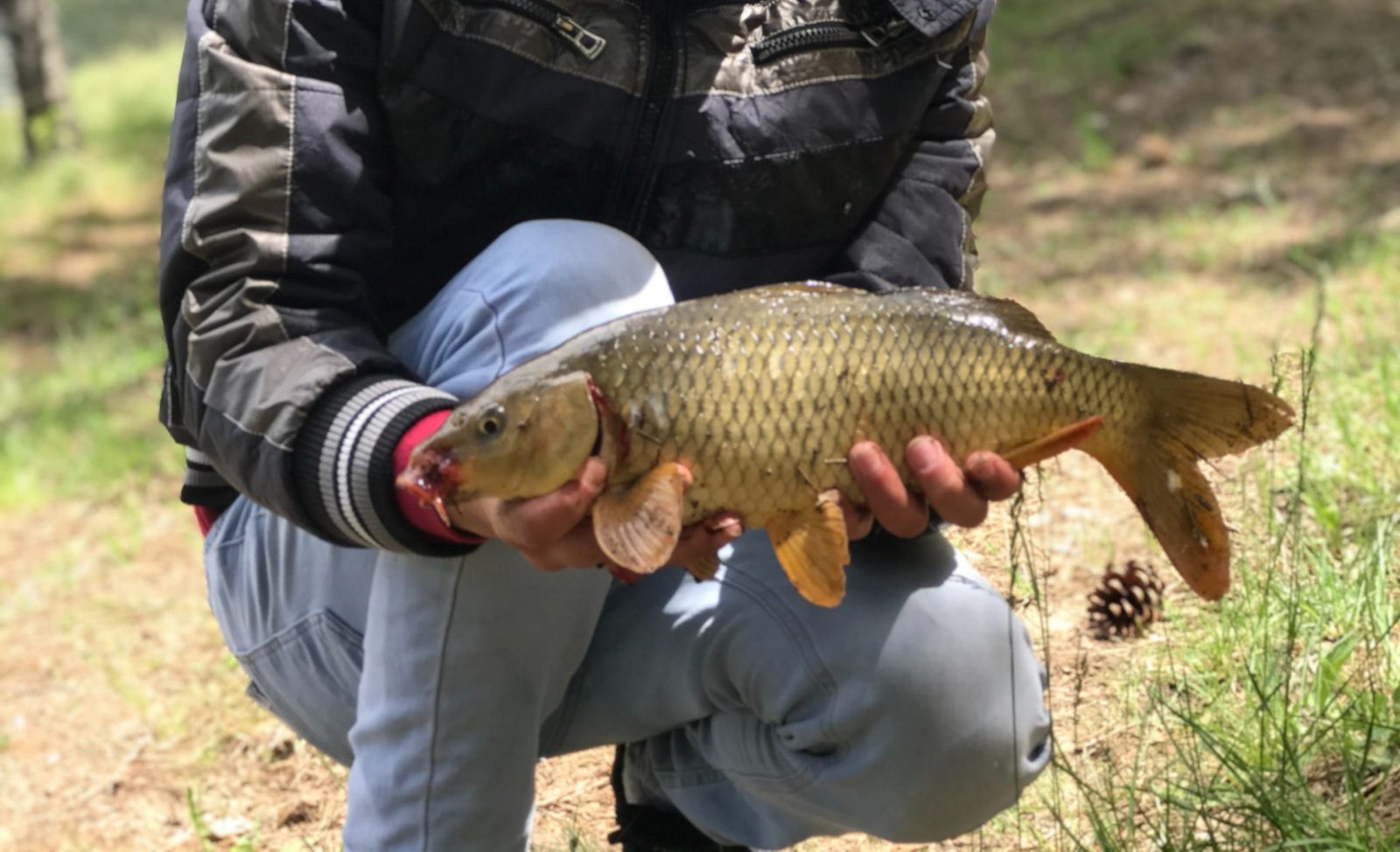
So you’re looking to catch some striper bass, but you’re new and don’t know where to start.
Well look no further, I got you covered.
One of the most effective baits for striper fishing are live eels. These slimy creatures are a favorite food of striped bass and can be fished in a variety of ways.
They can be fished on a slip sinker rig, Carolina rig, or even on a jighead. When using live eels, it’s important to keep them alive and well, as lively eels are more attractive to stripers.
Another great bait for striper fishing is menhaden chunks. These oily fish are a staple in the diet of striped bass and can be fished on a variety of rigs. They can be fished on a fish finder rig, Carolina rig, or even on a jighead. When fishing with menhaden chunks, it’s important to use fresh bait and to cut it into small pieces to make it more attractive to stripers.
Top Bait Choices for Striped Bass

In this section, I will share my top bait choices for striped bass, divided into two categories: natural baits and artificial lures.
Natural Baits
When it comes to natural baits, the fresher the bait is, the better. Striped bass are known to be picky eaters, so using fresh bait can make all the difference. Here are my top picks for natural baits:
- Menhaden: This oily baitfish is a favorite among striped bass and can be used whole or cut into chunks. It is especially effective when used as chum to attract schools of fish.
- Eels: Live eels are a popular bait choice for striped bass, especially in the surf. They can be rigged on a hook or used with a weighted rig to get them down to the bottom.
- Worms: They’re a classic bait that will work for a wide variety of fish. So if you’re targeting striper only, you might want to avoid them.
- Liver: It’s unmatched. Something about the smell of chicken liver especially drives striped bass crazy.
Artificial Lures
Artificial lures can be just as effective as natural baits when it comes to catching striped bass. Here are my top picks for artificial lures:
- Poppers: These topwater lures create a commotion on the surface of the water that can attract striped bass from a distance. They are especially effective in calm water.
- Jigs: Jigs can be used to imitate a variety of baitfish, making them a versatile choice for striped bass fishing. They can be fished at different depths and speeds to target fish in different areas.
- Swimmers: These lures imitate the swimming action of baitfish and can be fished at different depths to target fish in different areas. They are especially effective when fished in the surf.
Always experiment with lures and try to see what works best. Sometimes a combination of live and artificial bait might be the answer, while some days only using natural bait is the answer.
Now that you know what baits work best, I will provide you with more information about striper’s behavior and the setups that work best.
Striped Bass Behavior

Striped bass, also known as stripers, are a popular game fish found along the Atlantic coast of the United States. They are known for their hard-fighting nature and delicious taste, making them a favorite among anglers and seafood lovers alike.
Striped Bass Habitat
Striped bass can be found in a variety of habitats, including rivers, estuaries, and coastal waters. They are anadromous fish, meaning they spend most of their lives in saltwater but migrate to freshwater rivers to spawn. The Atlantic coast of the United States is home to some of the largest populations of striped bass, with Maine being a particularly important spawning ground.
Migration Patterns
Striped bass have a complex migration pattern that varies depending on the time of year and the location. In general, they migrate north in the spring and summer to feed in cooler waters and then return south in the fall and winter to spawn. During their migration, they can be found in both freshwater and saltwater habitats.
Feeding Habits
Striped bass are opportunistic feeders and will eat a variety of prey, including baitfish, crabs, and squid. Live bait is often the most effective way to catch stripers, with shad, herring, and manhaden being popular choices. Bucktail jigs and soft plastic lures can also be effective, particularly when fish are feeding near the surface.
If you understand these key factors properly, you will get a new view on how and when to catch stripers.
And honestly, this applies to every fish you’re targeting. When you understand their habitat and feeding habits, you’ll be sure to catch some any time you’re on the water.
And if you don’t catch anything, at least you know that it ain’t your fault.
Some Other Effective Lures

Along the lures mentioned above, you should consider these too. Here are some additional lures for catching striped bass:
Swim Shads
Swim shads are one of the most versatile lures for striped bass fishing. They can be used in a variety of conditions, and are effective both in freshwater and saltwater. The Tsunami Swim Shad and Storm Swim Shad are two popular options that have proven to be successful in catching striped bass.
These lures have a lifelike swimming action that mimics the movement of baitfish, which is exactly what striped bass are looking for. Swim shads come in a variety of sizes and colors, so it’s important to choose the right size and color based on the conditions you are fishing in.
Topwater Lures
Topwater lures are a great option for catching striped bass in shallow water. These lures create a commotion on the surface of the water that can attract the attention of striped bass. The Super Strike Little Neck Popper is a popular topwater lure that has been proven to be effective in catching striped bass.
When using a topwater lure, it’s important to vary your retrieve speed and technique to find what works best for the conditions you are fishing in.
Diving Plugs
Diving plugs are another effective option for catching striped bass. These lures are designed to dive underwater and mimic the movement of baitfish. The Yo-Zuri Mag Darter is a popular option that has proven to be successful in catching striped bass.
When using a diving plug, it’s important to choose the right depth based on the conditions you are fishing in. Varying your retrieve speed and technique can also help to attract the attention of striped bass.
Strategies for Fishing in Different Seasons
Spring Strategies
When fishing for striped bass in the spring, it’s important to keep in mind that these fish become more active as the water temperature warms up. Stripers prefer water temperatures between 55°F and 68°F, and they will generally seek out that range whenever possible. In the spring, waters will begin to warm up above 45°F, which means that stripers will become more active during this season.
When using live bait, hook the baitfish through both lips from the bottom up on a size 2-2/0 bait hook. Add several split shot 12-18 inches up the line, or a barrel swivel and 1/4-3/8 ounce sliding egg sinker above it. Another strategy is to use topwater lures, such as poppers or spooks, to entice stripers to the surface.
Summer Tactics
Summer is a great time to fish for striped bass, as they become more active in warmer waters. However, it’s important to keep in mind that stripers will often move to deeper waters during the hottest parts of the day. As such, it’s important to fish during the early morning and late afternoon hours when the water is cooler.
One effective tactic for summer fishing is to use jigs or soft plastic lures. These lures can be worked along the bottom to mimic the movement of baitfish, which will attract stripers. Another tactic is to use live bait, such as eels or bunker, which can be fished using a fishfinder rig or a Carolina rig.
Fall Approaches
Fall is a great time to fish for striped bass, as they begin to feed heavily in preparation for the winter months. During this season, stripers will often move closer to shore and can be found in shallower waters.
One effective approach for fall fishing is to use topwater lures, such as poppers or spooks. These lures can be worked along the surface to mimic the movement of baitfish, which will attract stripers. Another approach is to use live bait, such as herring or mackerel, which can be fished using a fishfinder rig or a Carolina rig.
When fishing for striped bass in different seasons, it’s important to keep in mind the water temperature and the behavior of the fish during that time of year.
Techniques for Different Environments
Surfcasting Tips
When surfcasting for striped bass, it is important to pay attention to the surf and current conditions. Striped bass are often found in areas where there is a lot of current, such as inlets and channels. It is also important to look for areas where the water is deeper, as this is where striped bass tend to feed.
When it comes to bait, live bait such as eels, clams, and sandworms are popular choices for surfcasting. Artificial lures such as plugs and jigs can also be effective. It is important to use a rod that is long enough to cast far out into the surf. A 9-10 foot rod is ideal for surfcasting.
Boat Fishing Techniques
When fishing for striped bass from a boat, it is important to pay attention to the structure of the water. Striped bass tend to congregate around structures such as rocks, jetties, and drop-offs. It is also important to pay attention to the depth of the water, as striped bass tend to feed in deeper water.
Live bait such as eels, herring, and bunker are popular choices for boat fishing. Artificial lures such as bucktails and soft plastics can also be effective. As discussed earlier, when using live bait, it is important to keep it lively and swimming naturally.
Freshwater vs Saltwater Striper Fishing
When fishing for freshwater striped bass, it is important to pay attention to the water temperature. Striped bass prefer cooler water temperatures, so they tend to be more active in the spring and fall. Live bait such as shad and herring are popular choices for freshwater striper fishing.
In saltwater, striped bass can be caught using a variety of techniques. Surfcasting and boat fishing are popular options. Live bait such as eels and bunker are popular choices. Artificial lures such as poppers and swimbaits can also be effective. It is important to pay attention to the tides and current conditions when fishing for saltwater striped bass.
Locating Prime Striper Fishing Spots

As with any fish out there, stripers also have their favorite spots and places they inhabit. Here are some tips for locating prime striper spots:
Coastal Structures
Coastal structures such as jetties, rocks, bridges, and piers are prime striper fishing spots. These structures provide cover for baitfish, which in turn attract striped bass. Look for areas where the water is deeper near these structures, as stripers tend to hang out in deeper waters during the day and move towards shallow areas at night.
Inland Hotspots
Inland hotspots for striper fishing include dams, deep holes, and submerged structures. These areas provide cover and ambush points for stripers. Wind can also play a role in locating prime striper fishing spots. Look for areas where the wind is blowing towards the shore, as this will push baitfish towards the shore and attract stripers.
Frequently Asked Questions
What are the top lures for catching striped bass from the shore?
When fishing for striped bass from the shore, it’s important to choose lures that mimic the baitfish that these predatory fish feed on. Some of the top lures for catching striped bass from the shore include topwater lures, soft plastic swimbaits, bucktail jigs, and metal spoons. The best lure to use will depend on the time of day, water conditions, and the type of baitfish that the striped bass are feeding on.
Which trolling lures are known to be most effective for striped bass?
When trolling for striped bass, it’s important to use lures that can be trolled at a variety of depths and speeds. Some of the most effective trolling lures for striped bass include umbrella rigs, deep-diving plugs, and swimming plugs. The best trolling lure to use will depend on the water depth, the speed of the current, and the type of baitfish that the striped bass are feeding on.
What live baits are recommended for freshwater striped bass?
When fishing for freshwater striped bass, live bait is often the most effective option. Some of the best live baits for freshwater striped bass include shad, herring, and eels. The best live bait to use will depend on the time of year, the water temperature, and the type of baitfish that the striped bass are feeding on.
Can you suggest the best rigs for successful striper fishing?
There are several different rigs that can be used for successful striper fishing. Some of the most popular rigs include the Carolina rig, the fish finder rig, and the drop shot rig. The best rig to use will depend on the type of bait being used, the water depth, and the current conditions.
What techniques should be used to catch striped bass at night?
Catching striped bass at night requires a different set of techniques than daytime fishing. Some effective techniques for catching striped bass at night include using topwater lures, fishing with live bait, and trolling with deep-diving plugs. It’s also important to use a light that attracts baitfish and striped bass to your location.
What are the preferred baits for targeting striped bass in rivers?
When targeting striped bass in rivers, it’s important to use baits that mimic the baitfish that these predatory fish feed on. Some of the preferred baits for targeting striped bass in rivers include shad, herring, eels, and nightcrawlers. The best bait to use will depend on the time of year, the water temperature, and the type of baitfish that the striped bass are feeding on.
As an Amazon Associates member, I might earn a commission when you buy through the links on this page, at no additional cost to you. Thanks for helping me do what I like.




